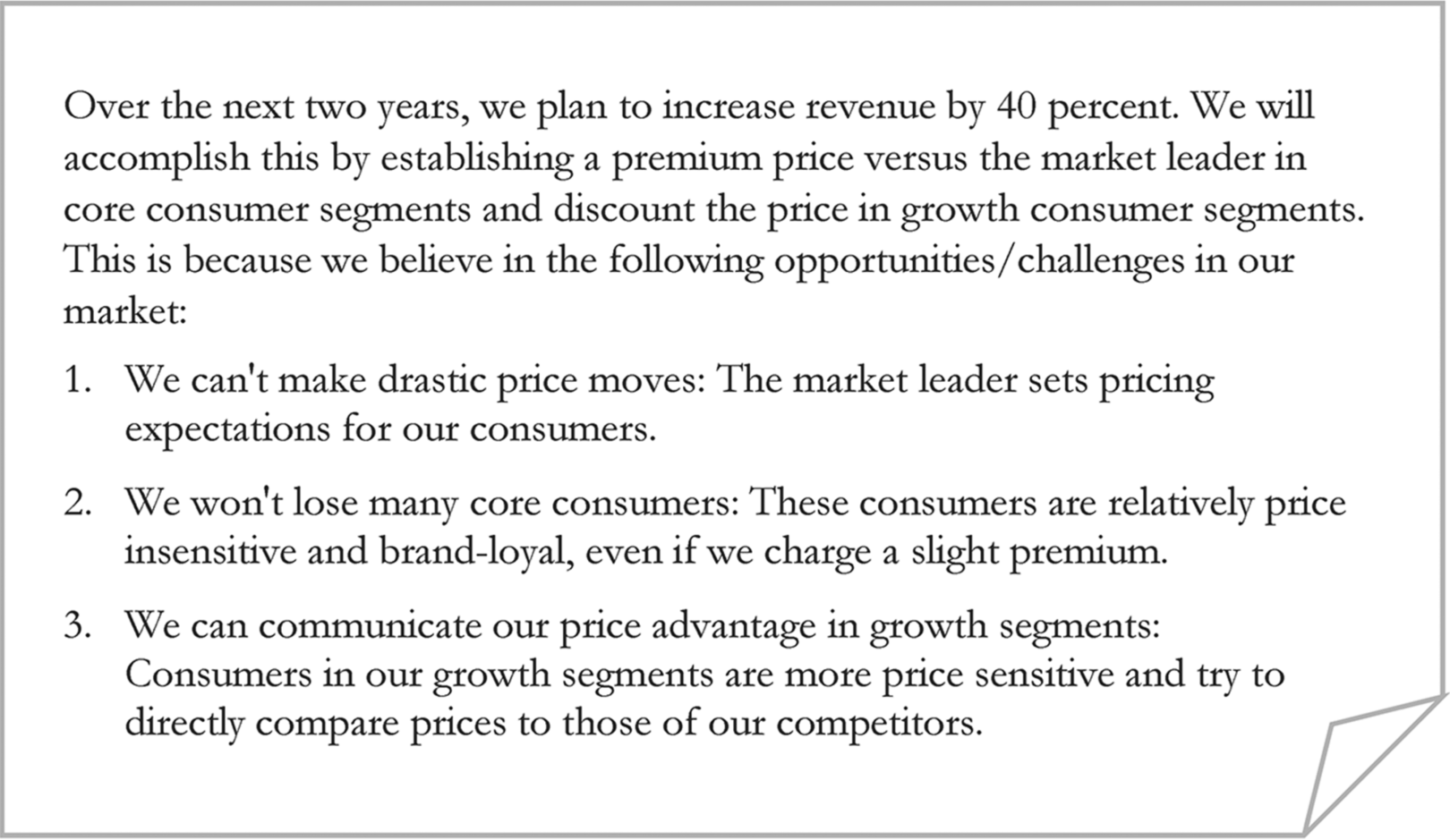Chapter 8Price Low for Market Share or High for Premium Branding?Pick the Winning Pricing Strategy
At this moment in your product development process, you have had the “willingness to pay” (WTP) talk early. You understand how customer needs differ by segment, you've developed offerings for each one, and you have picked the right monetization models.
Are you ready to set a price and launch your product? Not yet. Not before you establish a pricing strategy.
What do we mean by pricing strategy? Simply put, it is your short- and long-term monetization plan. At the highest level, a sound pricing strategy must have clear intent, quantifiable goals, and a time frame for execution. Figure 8.1 is a simple example of a high-level pricing strategy.

Figure 8.1 A Sample High-Level Pricing Strategy
Let's examine this strategy. The firm's objective is revenue growth by establishing a premium price in core segments and increasing the consumer base in growth segments. That's a clear objective. The time frame: over the next two years. Good; that's concrete. The third element is the firm's market position: It will follow most of the market leader's pricing moves. That makes perfect sense because the market leader sets consumers' price expectations.
The next element is also important: how the firm will treat each customer segment. The firm will lure consumers in growth segments with a slight discount ...
Get Monetizing Innovation now with the O’Reilly learning platform.
O’Reilly members experience books, live events, courses curated by job role, and more from O’Reilly and nearly 200 top publishers.

